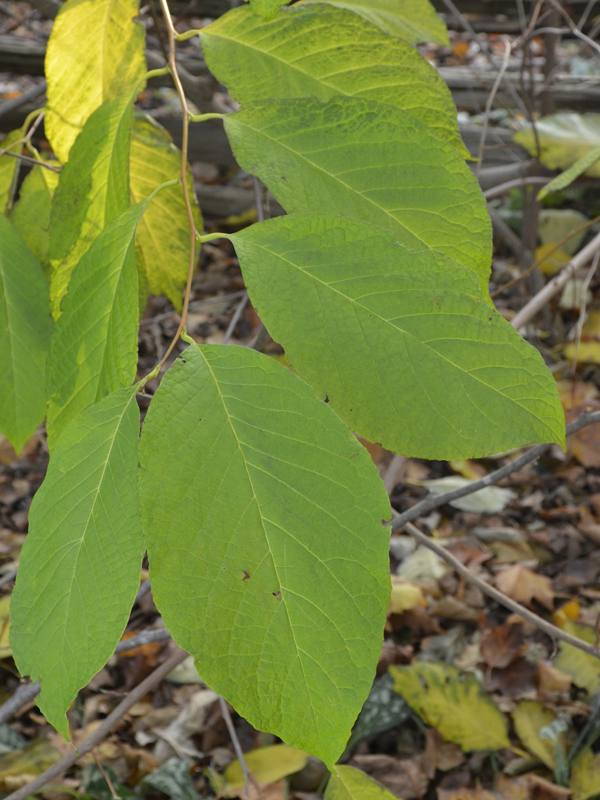| General Description | A small deciduous shrub with yellow flowers and leaves that emerge yellow, mature to green, and then fade back to a bright yellow in autumn. |
| Landscape | Excellent addition to a woodland garden, or for a pond margin. |
| Cultivation | Grow in partial or full shade in a rich, moist soil that is never allowed to dry out. Full sun may damage the leaves and is likely to ruin the autumn colouring. |
| Pests | No serious insect or disease problems. |
| Notable Specimens | Clark Wright Conservation Area, Caradoc Township, Ontario, Canada. The A.M. Cuddy Gardnes, Strathroy, Ontario, Canada. |
| Habitat | Forest understory. |
| Bark/Stem Description | Leathery bark with pliable twigs, occasionally causing allergic reactions. |
| Leaf Description | Leaves grow to approximately 10 cm long, emerging yellow, maturing to green, and then turning to a bright yellow in autumn. |
| Flower Description | Flowers are bell-shaped, less than 1 cm in length, and are a bright yellow, appearing in clusters in early spring before the foliage emerges. |
| Fruit Description | Fruit is a green drupe, 1.3 cm in diameter. |
